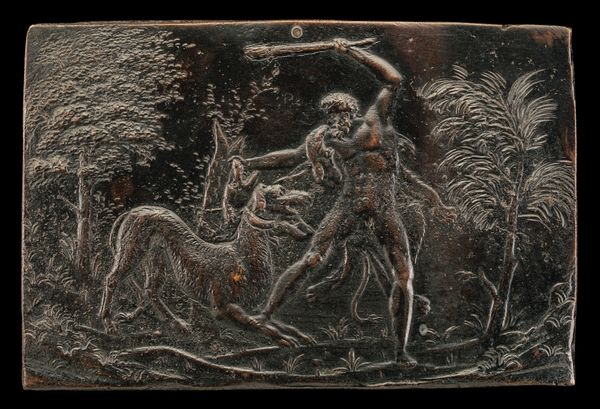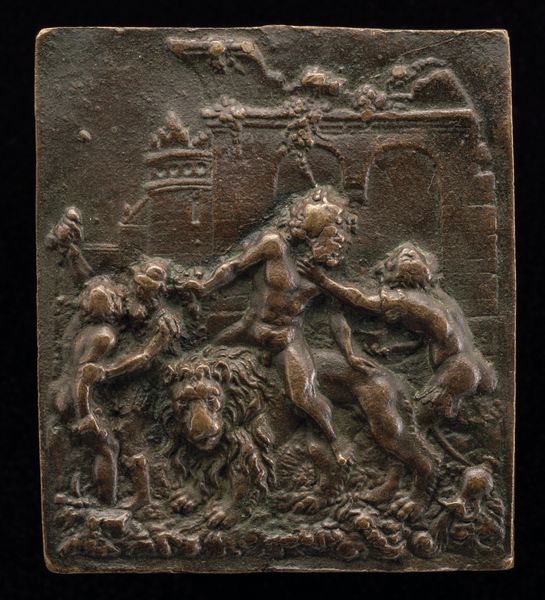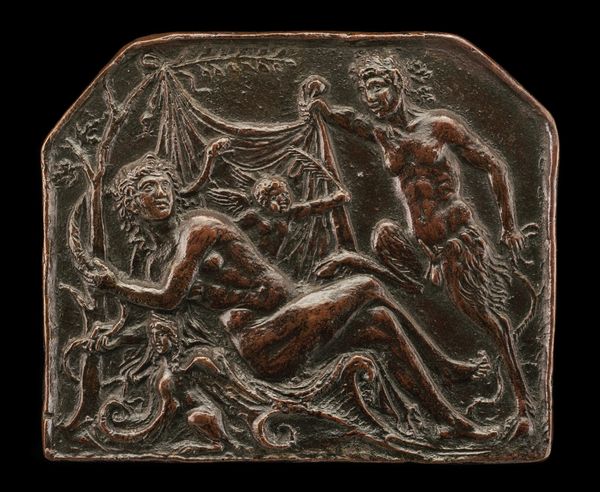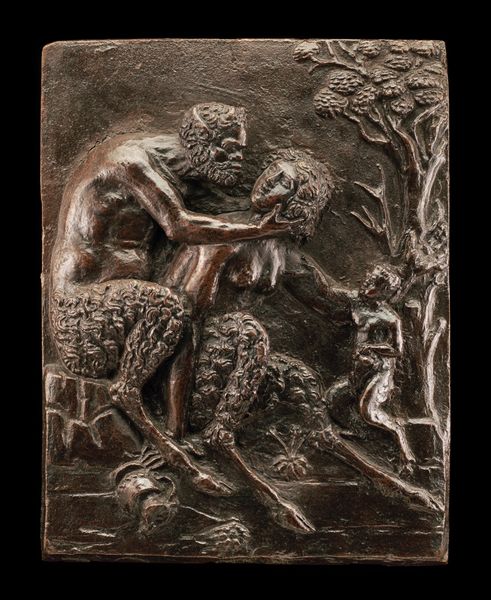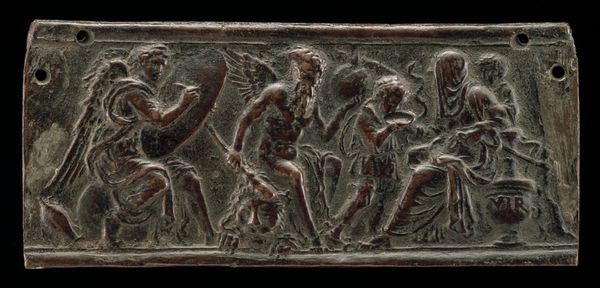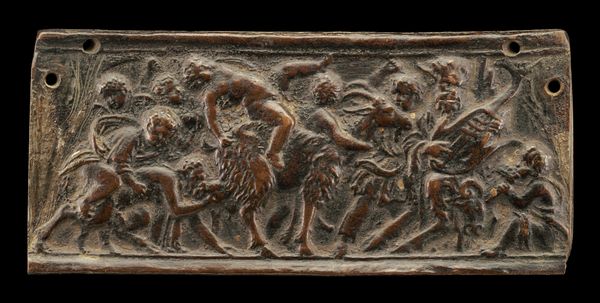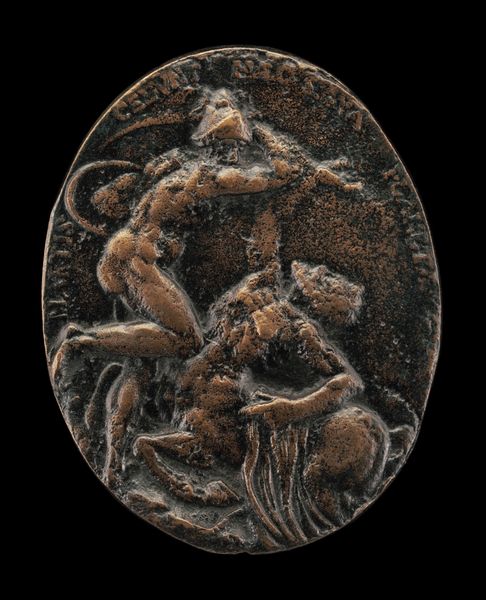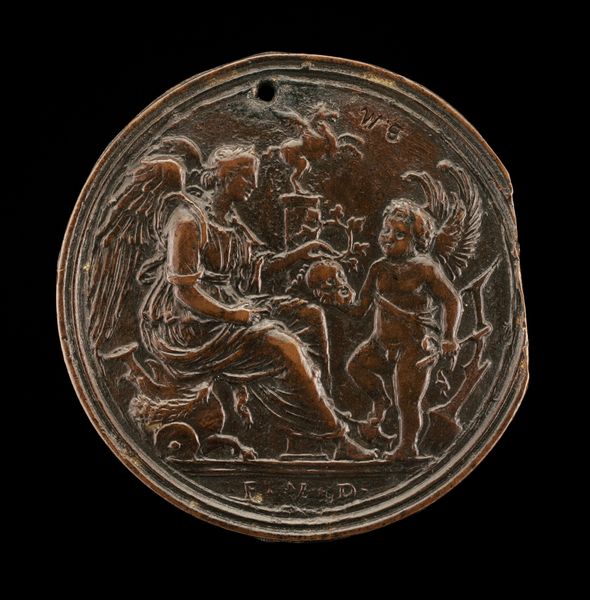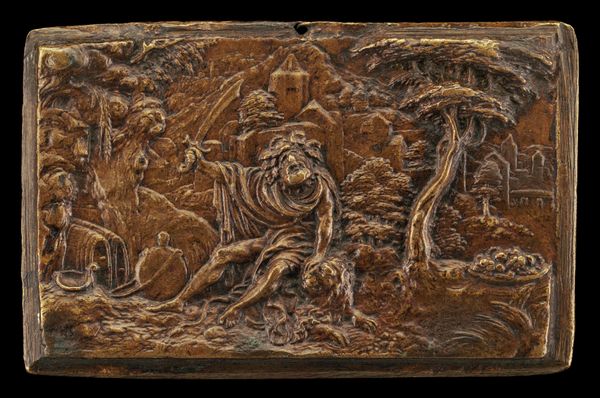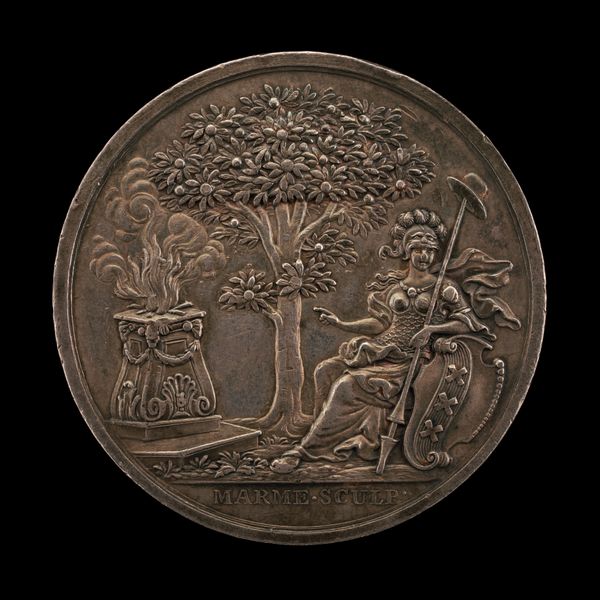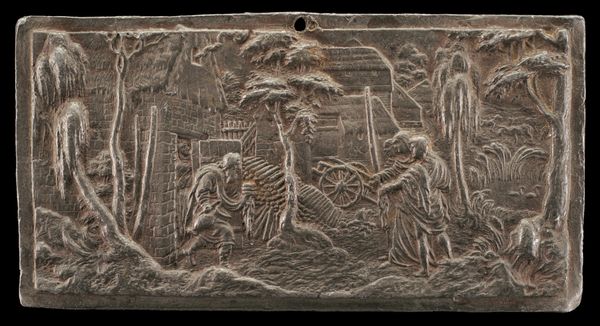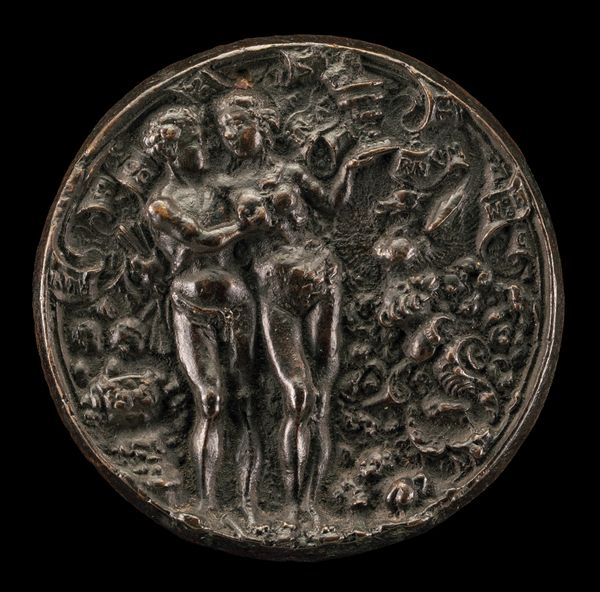
relief, sculpture
#
narrative-art
#
sculpture
#
relief
#
mannerism
#
figuration
#
sculpture
#
history-painting
Dimensions: overall: 9.1 x 13.6 cm (3 9/16 x 5 3/8 in.)
Copyright: National Gallery of Art: CC0 1.0
Annibale Fontana made this relief of Hercules and the Hydra from bronze sometime in the late 16th century. Bronze is an alloy of copper and tin, and it's durable and capable of capturing fine detail. Fontana likely created a clay model first, then used that to create a mold. Molten bronze was poured into the mold, allowed to cool, and then the relief was carefully removed. The dark color you see is likely a result of the bronze being patinated, a chemical process used to alter the surface color. Now, think about the labor involved. Mining the metals, smelting them, making the alloy, creating the model and mold, and finally casting and finishing the bronze. All of this required skilled labor, often organized in workshops. It is easy to imagine Fontana, a skilled artisan, working in a well-established workshop. The bronze medium not only allowed Fontana to depict a mythological scene but also reflects the economic and social structures of the time. This piece is a testament to the collaborative nature of artistic production, where skill and labor meet imagination.
Comments
No comments
Be the first to comment and join the conversation on the ultimate creative platform.
